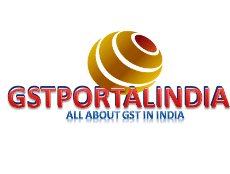GSTR-3B is a simplified GST summary return and the purpose of the return is for taxpayers to declare their summary of GST liabilities for a particular tax period and discharge these liabilities.
A normal taxpayer is required to file Form GSTR-3B returns monthly on or before the due date (20th of the next month) the same as available on the GST Portal.
GSTR 3b is not a provision return as per clarification through notification by CBIC. Now it will be treated as GSTR-3.
All normal taxpayers and casual taxpayers are required to file Form GSTR-3B.
Contents of this post
Where can I file Form GSTR-3B?
You can file Form GSTR-3B from the returns section of the GST Portal.
- First of all, you will have to log in by user id and password on the GST Portal.
- After that, In the postal-login mode, you can access it by going to Services > Returns > Returns Dashboard.
- After selecting the financial year and tax period, Form GSTR-3B, (if applicable), in the given period will be displayed.
- Then you can fill your GST summary as per your output and inward supplies of goods and services in the applicable form GSTR-3b.
When do I need to file Form GSTR-3B?
The specified due date for filing Form GSTR-3B is the 20th day of the month following the month (tax period) for which the return pertains.
However, the due date for filing Form GSTR-3B can be extended by CBIC through notification.
Is filing Form GSTR-3B mandatory?
Filing of Form GSTR3B is mandatory for all normal and casual taxpayers, even if there is no business in that particular tax period.
Because it is a summary of supplies on the bases of that tax will be calculated and if you have not any supplies then you can file Nil GSTR3b Return.
Can I file a nil Form GSTR-3B return?
You can file nil Form GSTR3B return in the same ways as navigating to Services > Returns > Returns Dashboard.
Select the Financial Year and Returns Filing Period and click the GSTR3B tile.
Select Yes for option A ‘Do you want to file Nil return?’. You can file nil Form GSTR3B by affixing the applicable signature.
What is Form GSTR3B Nil Return and when it can be filed?
As per GST Portal, Form GSTR3B can be filed as a nil return when there are no transactions.
As well as liability to be reported and paid in that return for that particular tax period.
Nil return can be filed by you if you have not made any outward supply and have not received any Goods/Services and do not have any tax liability.
For example, if your answer to any of the below questions is affirmative(yes), then your return will not be a nil return.
- Have you made any supply of goods/services (including nil rated, exempt and non-GST supplies) or received any supplies liable to reverse charge during this tax period?
- Have you made any inter-state supplies to unregistered persons, composition taxable persons, or UIN holders?
- Do you have any claim/reversal of Input tax credit (ITC) on the purchase of goods or receipt of services?
- Have you received any nil-rated, exempt, or non-GST supplies during this tax period?
- Do you have any interest or late fee (including carrying forward late fee) liability to be paid?
- Do you have any tax liability due to Form GST TRAN-1?
- Any other liability which is liable to be paid by you while filing your return?
Can I file an amendment in GSTR3b?
Form GSTR3B once filed cannot be revised. Adjustment, if any, may be done while filing Form GSTR3B for the subsequent period.
How GSTR-3b is now user-friendly?
These are reasons to say that GSTR-3b is user-friendly according to GST Portal.
- Fill in either CGST or SGST/UGST amount, other tax will get auto-filled.
- You can now save the Form on confirming details filled in the Table. You can fill balance details later.
- Preview Form or download it for cross-verifying saved details in any table(s) anytime.
- No more Submit requirement to freeze details and know the liability.
- Changes in any table can be made before making a payment towards liabilities.
- Once you proceed to payment, you can also see details of existing balances in cash and credit ledgers (Table 6.1 – Payments Table).
- The system suggested Tax Credit (ITC) is already filled for discharging the liability. Be aware, that it is only a suggestion. You can edit the same before finalizing the Return.
- Once you confirm ITC and cash utilization for payment of tax liability in the Payments Table, the system does an automatic calculation for the shortfall in the cash ledger.
- And Once you are Ok with the shortfall, System will generate a pre-filled challan for the shortfall and navigate to the payments option.
- Once you make an online payment, the system will navigate back to the Payments Table.
- Satisfied with the details filled, click “Proceed to file”, select authorized signatory, and Submit with EVC or DSC.
- Your Return is filed!
- You can Track Return status as well as download the Return through Track Return Status functionality available on your dashboard.
- How to login Udyam Registration Portal?
- Delhi EWS/DG Admission for 24-25, Eligibility, Dates
- Open cheque meaning, example, fillup, image & benefits
- Post dated cheque example, meaning, fillup & benefits
- Ante dated cheque meaning, example, filling & benefits

An Accountant, GSTP, GST blogger, Website Creator, SEO Builder & Co-founder of the website https://gstportalindia.in for the help of GST Taxpayers of India. Having a perfect accounting experience of more than 10 years in a Private Ltd Company.
